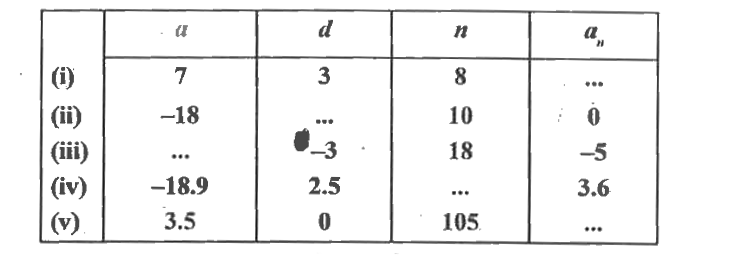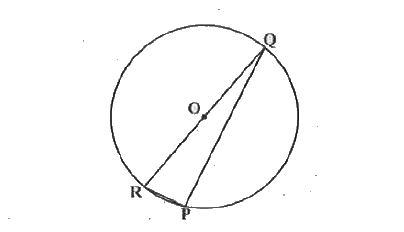In which of the following situations, does the list of numbers involved make arithmetic progression, and why ?
The amount of money in the account every year, when Rs.10,000 is deposited at compound interest at 8% per annum.Solution in Kannada
Step by step video & image solution for In which of the following situations, does the list of numbers involved make arithmetic progression, and why ? The amount of money in the account every year, when Rs.10,000 is deposited at compound interest at 8% per annum. by Maths experts to help you in doubts & scoring excellent marks in Class 10 exams.
Updated on:21/07/2023Topper's Solved these Questions
- ARITHMETIC PROGRESSIONBOOK - SUBHASH PUBLICATIONCHAPTER - ARITHMETIC PROGRESSIONEXERCISE - Exericise 1.2
26 Videos
- ARITHMETIC PROGRESSIONBOOK - SUBHASH PUBLICATIONCHAPTER - ARITHMETIC PROGRESSIONEXERCISE - Exericise 1.3
31 Videos
- AREAS RELATED TO CIRCLESBOOK - SUBHASH PUBLICATIONCHAPTER - AREAS RELATED TO CIRCLESEXERCISE - EXERCISE 5.3
18 Videos
- CIRCLESBOOK - SUBHASH PUBLICATIONCHAPTER - CIRCLESEXERCISE - EXERCISE 4.2
13 Videos
Similar Questions
Fill in the blanks in the following table, given that a is the first term, d the common difference and an nth term of the AP :

View SolutionFind the sum of the following APs :
2,7,12,…to 10th terms.
View SolutionUnless stated otherwise, use π=227.
Find the area of the shaded region in Fig. 5.19, if PQ = 24 cm, PR = 7 cm and O is the centre of the circle.

View SolutionFrom a point Q ,the length of the tangent to a circle is 24 cm and the distance of Q from the centre is 25 cm . The radius of the circle is
View SolutionIn which of the following situations, does the list of numbers involved make an arithmetic progression, and why?
(i) The taxi fare after each km when the fare is Rs 15 for the first km and Rs 8 for each additional km.
(ii) The amount of air present in a cylinder when a vacuum pump removes 1/4 of the air remaining in the cylinder at a time.
(iii) The cost of digging a well after every metre of digging, when it costs Rs.150 for the first metre and rises by Rs. 50 for each subsequent metre.
(iv) The amount of money in the account every year, when 10000 is deposited at compound interest at 8 % per annum.
View SolutionThe amount of money in the account every year,when Rs10000 is deposited at compound interest at 8% per annum.
View SolutionFind the sum of money which will amount to Rs 26010 in 6 months at the rate of 8% per annum when the interest is compounded quarterly.
View Solutionनीचे दी गई परिस्थिति में सम्बध्द संख्याओं की सूची में कौन A.P. में हैं और क्यों ?
किसी खाते में प्रति वर्ष जमा राशि , जब 10000 रु0 की मूल राशि , 8% प्रतिवर्ष की चक्रवृध्दि ब्याज की दर से जमा की जाती हैं ।
View SolutionWhich of the following situations gives the parallelogram and why? The initial deposit is Rs.10000 / - per annum with an interest rate of 8%.
View Solutionఒక బ్యాంకులో Rs.10000 లను సంవత్సరానికి 8 శాతం చక్రవడ్డీ ప్రకారం పొదుపు చేసిన ప్రతి సంవత్సరము చివరలో ఖాతాలో ఉండే సొమ్ము.
View SolutionIn which of the following situations, does the list of numbers involved make an arithmetic progression, and why?
(ii) The amount of air present in a cylinder when a vacuum pump removes 1/4th of the air remaining in the cylinder at a time.
View SolutionIf they are in G.P.Write next one terms.
1/2, 1/4, 1/8,…….
View SolutionIn which of the following situations, does the list of numbers involved form an arithmetic progression, and why?
(i)The taxi fare after each km when the fare is Rs 15 for the first km and Rs 8 for additional km.
(ii) The amount of air present in a cylinder when a vacuum pump removes (14)th of the air remaining in the cylinder at a time.
(iii) The cost of digging a well, after every metre of digging, when it costs 150 for the first metre and rises by 50 for each subsequent metre.
(iv) The amount of money in the account every year, when 10000 is deposited at compound interest at 8 % per annum.
View SolutionIn which of the following situations, does the list of numbers involved form an arithmetic progression, and why?
The minimum taxi fare is additional km.
(ii) The amount of air present in a cylinder when a vacuum pump removes of the air remaining in the cylinder at a time.
(iii) The cost of digging a well, after every metre of digging, when it costs 150 for the first metre and rises by 50 for each subsequent metre.
(iv) The amount of money in the account every year, when 10000 is deposited at compound interest at 8 % per annum.
View SolutionIn which of the following situations, does the list of numbers involved form an arithmetic progression, and why?
(i)The taxi fare after each km when the fare is Rs 15 for the first km and Rs 8 for additional km.
(ii) The amount of air present in a cylinder when a vacuum pump removes (14)th of the air remaining in the cylinder at a time.
(iii) The cost of digging a well, after every metre of digging, when it costs 150 for the first metre and rises by 50 for each subsequent metre.
(iv) The amount of money in the account every year, when 10000 is deposited at compound interest at 8 % per annum.
View SolutionThe amount of money in the account every year, when Rs 10000 is deposited at compound interest at 8 % per annum.
View Solution
